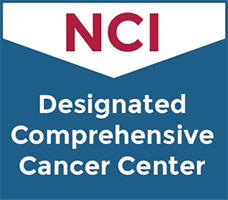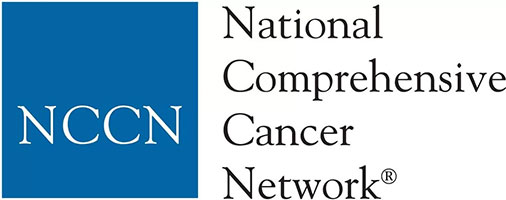Venetoclax in Children With Relapsed Acute Myeloid Leukemia (AML)
Multiple Cancer Types
A study to evaluate if the randomized addition of venetoclax to a chemotherapy backbone (fludarabine/cytarabine/gemtuzumab ozogamicin \[GO\]) improves survival of children/adolescents/young adults with acute myeloid leukemia (AML) in 1st relapse who are unable to receive additional anthracyclines, or in 2nd relapse.
Pediatric Leukemia,
Pediatrics
III
Smith, Christine
NCT05183035
VICCPED2237
A Study of a New Way to Treat Children and Young Adults With a Brain Tumor Called NGGCT
Multiple Cancer Types
This phase II trial studies the best approach to combine chemotherapy and radiation therapy (RT) based on the patient's response to induction chemotherapy in patients with non-germinomatous germ cell tumors (NGGCT) that have not spread to other parts of the brain or body (localized). This study has 2 goals: 1) optimizing radiation for patients who respond well to induction chemotherapy to diminish spinal cord relapses, 2) utilizing higher dose chemotherapy followed by conventional RT in patients who did not respond to induction chemotherapy. Chemotherapy drugs, such as carboplatin, etoposide, ifosfamide, and thiotepa, work in different ways to stop the growth of tumor cells, either by killing the cells, by stopping them from dividing, or by stopping them from spreading. Radiation therapy uses high energy x-rays or high-energy protons to kill tumor cells and shrink tumors. Studies have shown that patients with newly-diagnosed localized NGGCT, whose disease responds well to chemotherapy before receiving radiation therapy, are more likely to be free of the disease for a longer time than are patients for whom the chemotherapy does not efficiently eliminate or reduce the size of the tumor. The purpose of this study is to see how well the tumors respond to induction chemotherapy to decide what treatment to give next. Some patients will be given RT to the spine and a portion of the brain. Others will be given high dose chemotherapy and a stem cell transplant before RT to the whole brain and spine. Giving treatment based on the response to induction chemotherapy may lower the side effects of radiation in some patients and adjust the therapy to a more efficient one for other patients with localized NGGCT.
Germ Cell (Pediatrics),
Pediatrics
II
Esbenshade, Adam
NCT04684368
COGACNS2021
A Study to Compare Standard Therapy to Treat Hodgkin Lymphoma to the Use of Two Drugs, Brentuximab Vedotin and Nivolumab
Multiple Cancer Types
This phase III trial compares the effect of adding immunotherapy (brentuximab vedotin and nivolumab) to standard treatment (chemotherapy with or without radiation) to the standard treatment alone in improving survival in patients with stage I and II classical Hodgkin lymphoma. Brentuximab vedotin is in a class of medications called antibody-drug conjugates. It is made of a monoclonal antibody called brentuximab that is linked to a cytotoxic agent called vedotin. Brentuximab attaches to CD30 positive lymphoma cells in a targeted way and delivers vedotin to kill them. A monoclonal antibody is a type of protein that can bind to certain targets in the body, such as molecules that cause the body to make an immune response (antigens). Immunotherapy with monoclonal antibodies, such as nivolumab, may help the body's immune system attack the cancer, and may interfere with the ability of tumor cells to grow and spread. Chemotherapy drugs such as doxorubicin hydrochloride, bleomycin sulfate, vinblastine sulfate, dacarbazine, and procarbazine hydrochloride work in different ways to stop the growth of cancer cells, either by killing the cells, by stopping them from dividing, or by stopping them from spreading. Cyclophosphamide is in a class of medications called alkylating agents. It works by damaging the cell's deoxyribonucleic acid (DNA) and may kill cancer cells. It may also lower the body's immune response. Etoposide is in a class of medications known as podophyllotoxin derivatives. It blocks a certain enzyme needed for cell division and DNA repair and may kill cancer cells. Vincristine is in a class of medications called vinca alkaloids. It works by stopping cancer cells from growing and dividing and may kill them. Prednisone is in a class of medications called corticosteroids. It is used to reduce inflammation and lower the body's immune response to help lessen the side effects of chemotherapy drugs. Radiation therapy uses high energy x-rays to kill tumor cells and shrink tumors. Adding immunotherapy to the standard treatment of chemotherapy with or without radiation may increase survival and/or fewer short-term or long-term side effects in patients with classical Hodgkin lymphoma compared to the standard treatment alone.
Pediatric Lymphoma,
Pediatrics
III
Smith, Christine
NCT05675410
VICC-NTPED23306
A Multi-Institution Study of TGF Imprinted, Ex Vivo Expanded Universal Donor NK Cell Infusions as Adoptive Immunotherapy in Combination With Gemcitabine and Docetaxel in Patients With Relapsed or Refractory Pediatric Bone and Soft Tissue
Multiple Cancer Types
The purpose of this study is to determine if the addition of infusions of a type of immune cell called a "natural killer", or NK cell to the sarcoma chemotherapy regimen GEM/DOX (gemcitabine and docetaxel) can improve outcomes in people with childhood sarcomas that have relapsed or not responded to prior therapies.
The goals of this study are:
* To determine the safety and efficacy of the addition of adoptive transfer of universal donor, TGF imprinted (TGFi), expanded NK cells to the pediatric sarcoma salvage chemotherapeutic regimen gemcitabine/docetaxel (GEM/DOX) for treatment of relapsed and refractory pediatric sarcomas To determine the 6-month progression free survival achieved with this treatment in patients within cohorts of relapsed or refractory osteosarcoma, Ewing sarcoma, rhabdomyosarcoma and non-rhabdomyosarcoma soft tissue sarcoma.
* To identify toxicities related to treatment with GEM/DOX + TGFi expanded NK cells
Participants will receive study drugs that include chemotherapy and NK cells in cycles; each cycle is 21 days long and you can receive up to 8 cycles.
* Gemcitabine (GEM): via IV on Days 1 and 8
* Docetaxel (DOX): via IV on Day 8
* Prophylactic dexamethasone: Day 7-9 to prevent fluid retention and hypersensitivity reaction
* Peg-filgrastim (PEG-GCSF) or biosimilar: Day 9 to help your white blood cell recover and allow more chemotherapy to be given
* TGFi NK cells: via IV on Day 12
The goals of this study are:
* To determine the safety and efficacy of the addition of adoptive transfer of universal donor, TGF imprinted (TGFi), expanded NK cells to the pediatric sarcoma salvage chemotherapeutic regimen gemcitabine/docetaxel (GEM/DOX) for treatment of relapsed and refractory pediatric sarcomas To determine the 6-month progression free survival achieved with this treatment in patients within cohorts of relapsed or refractory osteosarcoma, Ewing sarcoma, rhabdomyosarcoma and non-rhabdomyosarcoma soft tissue sarcoma.
* To identify toxicities related to treatment with GEM/DOX + TGFi expanded NK cells
Participants will receive study drugs that include chemotherapy and NK cells in cycles; each cycle is 21 days long and you can receive up to 8 cycles.
* Gemcitabine (GEM): via IV on Days 1 and 8
* Docetaxel (DOX): via IV on Day 8
* Prophylactic dexamethasone: Day 7-9 to prevent fluid retention and hypersensitivity reaction
* Peg-filgrastim (PEG-GCSF) or biosimilar: Day 9 to help your white blood cell recover and allow more chemotherapy to be given
* TGFi NK cells: via IV on Day 12
Pediatrics,
Sarcoma
I/II
Borinstein, Scott
NCT05634369
VICCPED24617
Chemotherapy for the Treatment of Patients With Newly Diagnosed Very Low-Risk and Low Risk Fusion Negative Rhabdomyosarcoma
Pediatrics
Pediatrics
Rhabdomyosarcoma is a type of cancer that occurs in the soft tissues in the body. This phase III trial aims to maintain excellent outcomes in patients with very low risk rhabdomyosarcoma (VLR-RMS) while decreasing the burden of therapy using treatment with 24 weeks of vincristine and dactinomycin (VA) and examines the use of centralized molecular risk stratification in the treatment of rhabdomyosarcoma. Another aim of the study it to find out how well patients with low risk rhabdomyosarcoma (LR-RMS) respond to standard chemotherapy when patients with VLR-RMS and patients who have rhabdomyosarcoma with DNA mutations get separate treatment. Finally, this study examines the effect of therapy intensification in patients who have RMS cancer with DNA mutations to see if their outcomes can be improved.
Pediatrics
III
Borinstein, Scott
NCT05304585
COGARST2032
A Study of Combination Chemotherapy for Patients With Newly Diagnosed DAWT and Relapsed FHWT
Multiple Cancer Types
This phase II trial studies how well combination chemotherapy works in treating patients with newly diagnosed stage II-IV diffuse anaplastic Wilms tumors (DAWT) or favorable histology Wilms tumors (FHWT) that have come back (relapsed). Drugs used in chemotherapy regimens such as UH-3 (vincristine, doxorubicin, cyclophosphamide, carboplatin, etoposide, and irinotecan) and ICE/Cyclo/Topo (ifosfamide, carboplatin, etoposide, cyclophosphamide, and topotecan) work in different ways to stop the growth of tumor cells, either by killing the cells, by stopping them from dividing, or by stopping them from spreading. This trial may help doctors find out what effects, good and/or bad, regimen UH-3 has on patients with newly diagnosed DAWT and standard risk relapsed FHWT (those treated with only 2 drugs for the initial WT) and regimen ICE/Cyclo/Topo has on patients with high and very high risk relapsed FHWT (those treated with 3 or more drugs for the initial WT).
Pediatrics,
Wilms / Other Kidney (Pediatrics)
II
Benedetti, Daniel
NCT04322318
COGAREN1921
Thoracotomy Versus Thoracoscopic Management of Pulmonary Metastases in Patients With Osteosarcoma
Multiple Cancer Types
This phase III trial compares the effect of open thoracic surgery (thoracotomy) to thoracoscopic surgery (video-assisted thoracoscopic surgery or VATS) in treating patients with osteosarcoma that has spread to the lung (pulmonary metastases). Open thoracic surgery is a type of surgery done through a single larger incision (like a large cut) that goes between the ribs, opens up the chest, and removes the cancer. Thoracoscopy is a type of chest surgery where the doctor makes several small incisions and uses a small camera to help with removing the cancer. This trial is being done evaluate the two different surgery methods for patients with osteosarcoma that has spread to the lung to find out which is better.
Pediatrics,
Sarcoma
III
Borinstein, Scott
NCT05235165
COGAOST2031
NMTT-Neuroblastoma Maintenance Therapy Trial Using Difluoromethylornithine (DFMO)
Multiple Cancer Types
Endocrine,
Neuroblastoma (Pediatrics),
Neuroendocrine,
Pediatrics
II
Pastakia, Devang
NCT02679144
VICCPED16157
Digoxin Medulloblastoma Study
Multiple Cancer Types
The purpose of this study is to evaluate the efficacy of digoxin in treating relapsed non-SHH, non-WNT medulloblastoma in pediatric and young adult patients.
Neuro-Oncology,
Pediatrics
II
Esbenshade, Adam
NCT06701812
VICCPED24621


